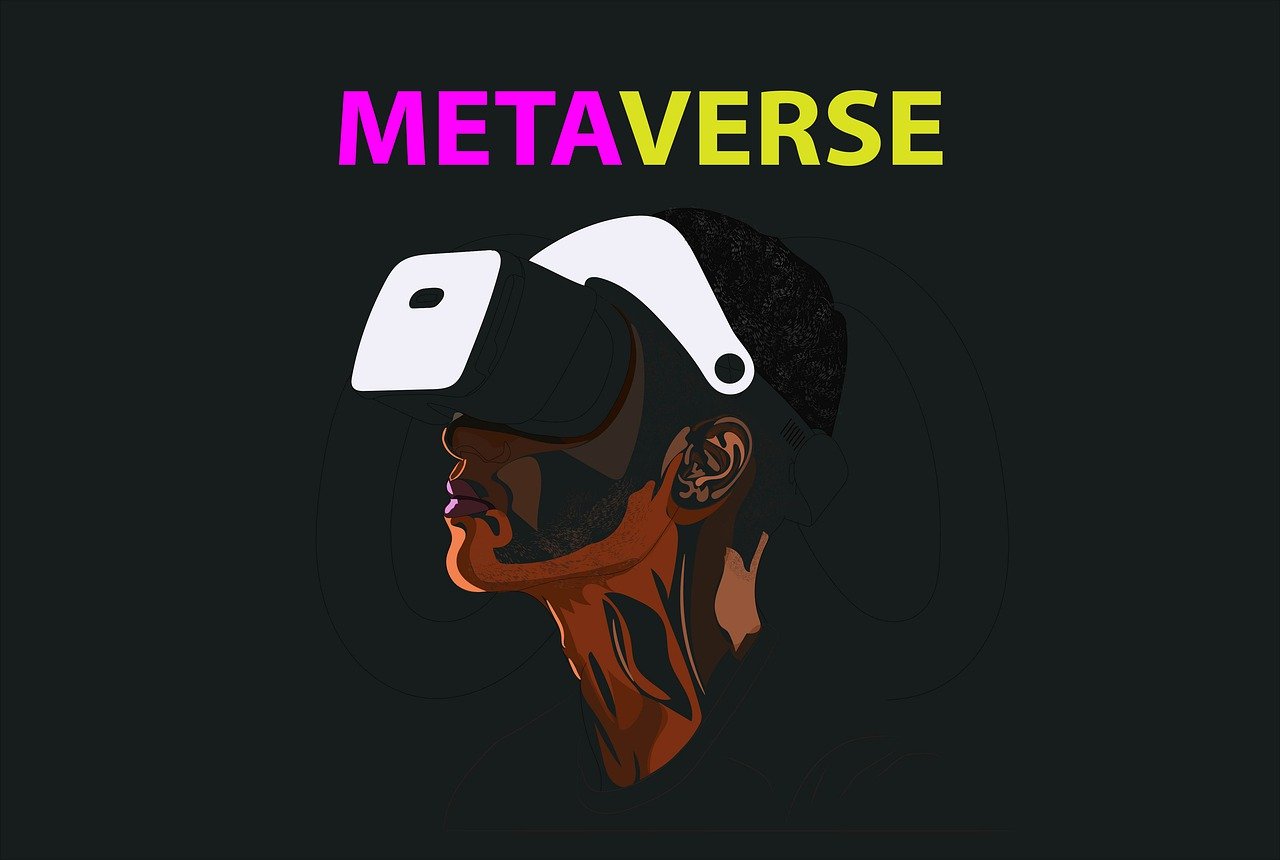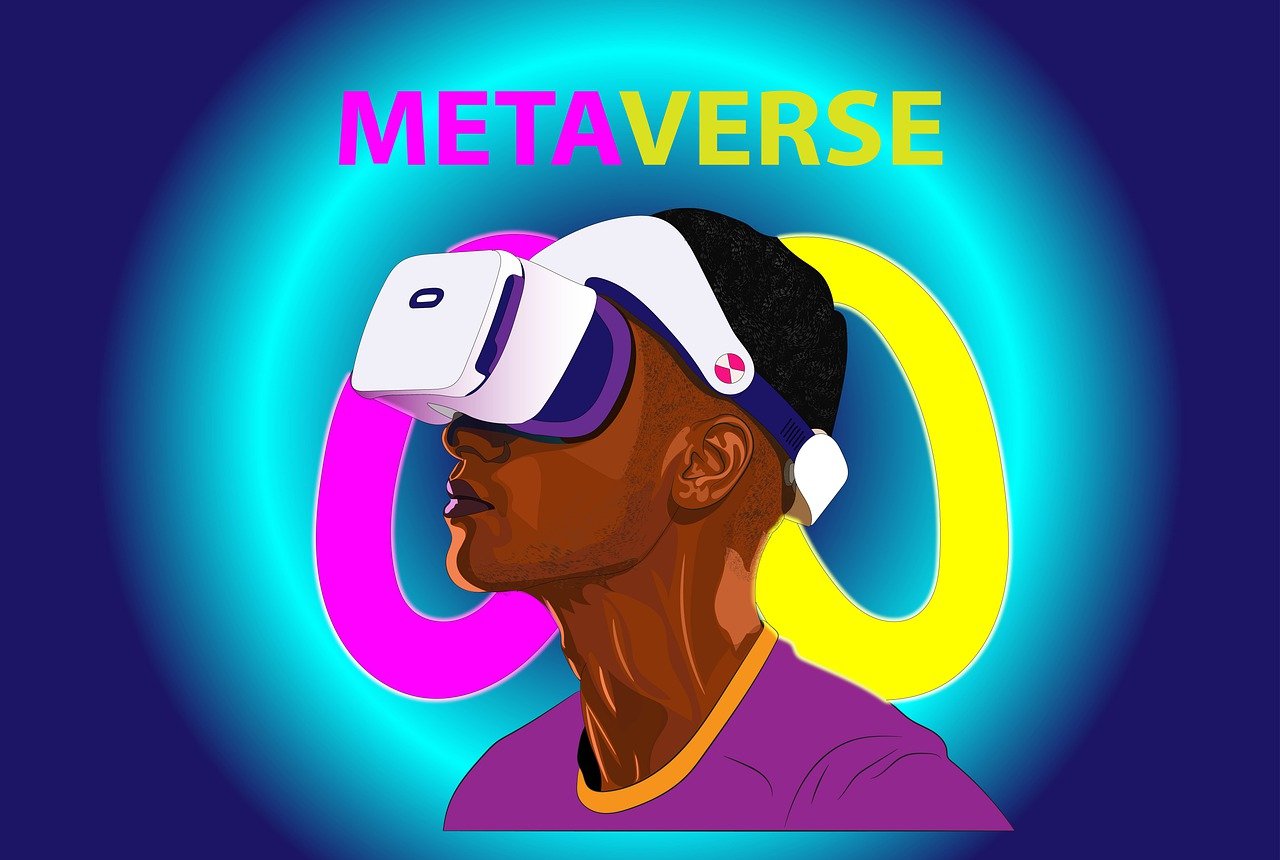The Metaverse is an upcoming version of the Internet that is a piece of shared virtual reality. The Metaverse may imply the complete range of augmented reality, not simply virtual realms operated by social media organizations. Simply put, it will gradually supplant the flat apps and websites we use now with 3D worlds and shared areas.
The word “Metaverse” speaks about a collection of online worlds where real, augmented, and virtual reality meet each other. People can purchase stuff and supplies, mingle with mates, and show up for gatherings, among others. Users cannot shift between the multiple virtual realms available online.
Constructing a substitute for the digital world is not an unknown theory. We have constantly shown them in video games. NFTs and digital asset mania are strengthening the digital property marketplace and outlets that provide augmented and virtual reality. This environment supports producing more enthralling VR experiences.


What is Metaverse?
It is natural to think of the Metaverse considering how we defined the internet through its inception in the 70s and 80s. A unique format of reciprocal message and connection was being shaped gradually, and no one was exactly sure what it would be like or how it would function.
But today we find ourselves in a digitally savvy, unified international society using the internet that is transforming our lives every day. The same also applies to the Metaverse: it is the “future internet” but currently, no one is completely cognizant of what it feels like when thoroughly welcomed by humanity.
The Metaverse shows a vast transformation in how we connect with technology. Like 3D internet or cyberspace, it is a standard virtual area where real and digital virtual realities come together.
It has become possible because of technologies like augmented reality (AR), virtual reality (VR), artificial intelligence (AI), head-mounted displays (HMDs), blockchain technology, the internet of things (IoT), spacial technologies, and 5G. Yet, it is device independent, implying that it goes on continuously doesn’t matter if you are in the Metaverse.
What is are NFTs?
What is Web 3.0?
It is a digital investment. NFTs are not convertible, and all are unique. NFTs includes digital design, music, real estate, and other assets or in-game objects.
Similar to Web 2.0, Web 3.0 relates to the later generation of the internet. We expect it to be more active, interactive, smart, and easy to use than Web 2.0. Some technologies that are usually closely related to Web 3.0 comprise artificial intelligence, virtual reality, and blockchain
What is are NFTs?
If you wish to revive your understanding, the NFT marketplace is a scientific approach for exchanging NFTs in the Metaverse. Given that the Metaverse is an impersonation of the physical world, enabling communities to talk, relax, travel, and even do business.
It even has an exclusive economic structure founded on the blockchain. This technology provides trade safety, as blockchain-based NFTs are movable across the entire Metaverse.
After you have a Metaverse answer for your business, like real estate or gaming, set up and execute a simulated market where all the relevant NFTs (for instance, gaming resources or sections of a virtual region) we auction for sale. Yet, what are the differences between marketplaces for different domains? You will learn more about it in the upcoming sections.
Metaverse NFT Marketplace development is a broad and specialized method of building NFT marketplaces in the metaverse that helps virtual territories, in-game resources, personalities, virtual homes, etc.
The Metaverse NFT marketplace delivers reciprocating and entertaining realities, empowering users to tokenize their digital resources immediately, exhibit them, and then resale their NFTs in the marketplace register.
It is an indisputable truth that Metaverse NFTs aren’t just confined to a list of certain elements or things, but it has gone much beyond our wildest dreams.
Benefits of Metaverse NFT Marketplace
Undoubtedly, digital currency is going to be the technology of the future. The cryptocurrency market may go up and down, but it will not disappear anytime soon. Like the Internet, blockchain and cryptos are going to get to the most distant territories of the world.
What Makes the Metaverse NFT Marketplace the Best?
Storefront
Metaverse NFT marketplace performs just like an e-commerce webpage or buying channel. Therefore, it must provide a beautiful and perceptive user storefront that gives the buyers many details — for example — item lists, NFT proprietorship data, sneak peeks, and price information. With this knowledge, buyers can instantly find out the legitimacy of the digital assets before purchasing.
Decentralization
The decentralized infrastructure of an NFT marketplace gets rid of the necessity of any brokers involved in trade & payments. We administer these marketplaces through blockchain technology, where we execute events automatically through smart contracts, and it stores information across a distributed ledger in metadata. Blockchain-powered NFT marketplaces are robust in safety and quickness.
Interoperability
This provides a Metaverse NFT marketplace with a cross-chain network. It’s an essential component that connects different autonomous marketplaces, giving the buyers an interconnected feel and enabling them to delve into various self-governing marketplaces and take part in their socio-cultural acts with no restrictions.
3D Immersive Environment
Metaverse NFT marketplace presents a natural 3D immersive environment, enabling the customers to interact and take part in trade movements over an admiringly interactive atmosphere. Present-day tools like Unreal Engine and Unity provide the developers with the elements needed to set up more naturalistic NFT marketplaces for the Metaverse.
Seamless Tokenization
The classic Metaverse NFT marketplace enables immediate and smooth asset tokenization for customers. Sticking to the different token rules, customers can tokenize their digital assets to get particular rights and exchange the assets on the marketplace.
Dual-Factor Authentication
Two-step verification guarantees immediate and reliable user login to the NFT marketplace while safeguarding the users’ credentials and the means they access.
Peer-to-Peer Transactions
Recording transactions over a decentralized peer-to-peer structure facilitates safe asset transactions on the NFT marketplace.
NFT Wallets
We integrate NFT wallets into Metaverse NFT marketplaces to allow the customer to buy, move, and keep digital assets, apart from offering connectivity to the Metaverse.
Payment Gateways
Through a feature-perfect payment gateway, an NFT marketplace can enable the storefront to receive compensation in native tokens and cryptos, inviting wider customers for mass acceptance.
DAO (Decentralized Autonomous Organization) Integration
Considerable Metaverse NFT marketplaces embraced the DAO standard to create an autonomous organization and not get subjected to any pecking order. Members, where all minor or major decisions are made through voting and proposals, control a DAO-enabled marketplace.
What are the Different Metaverse NFT Marketplaces Existing Today?
People who don’t observe news on the Metaverse subject would stand in awe at how many leading businesses and firms from unforeseen businesses have joined the Metaverse. It also needs to be that they have discovered a powerful meaning in setting up their Metaverse marketplaces. We’ll have a look at what’s unique about these schemes and how they run.
Metaverse and NFTs go hand in hand, causing more profitable growth prospects for organizations. Hence, it’s time for companies to bankroll this innovative technology and set up NFT marketplaces and Metaverses with high-end features.
It encourages them to hand over their users with a better-quality experience of examining the proposed products and services over a 3D immersive and physical world.



